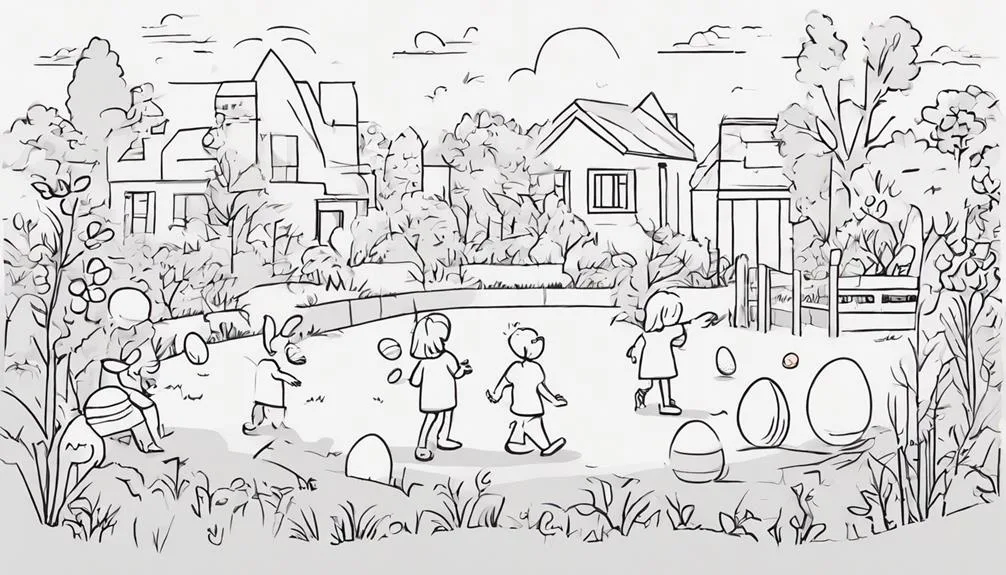Teaching kids about Easter is important for their spiritual growth. It’s about Jesus’ sacrifice and His resurrection, offering valuable lessons on faith and love.
These nine key lessons from Easter can help shape a child’s view on life and guide them in the right way. They make Easter more meaningful and teach important values.
Let’s explore these lessons that can deeply connect with kids and help them grow spiritually.
Key Takeaways
- Easter teaches about Jesus’ resurrection and sacrifice for humanity, symbolizing hope and victory over darkness.
- Jesus valued children, teaching humility and sincerity in faith, welcoming them into God’s Kingdom.
- Easter activities offer lessons on forgiveness, reconciliation, and the symbolism of new life and blessings.
- Celebrate Easter with family bonding, creating lasting memories of faith, love, and renewal.
1. The Meaning of Easter
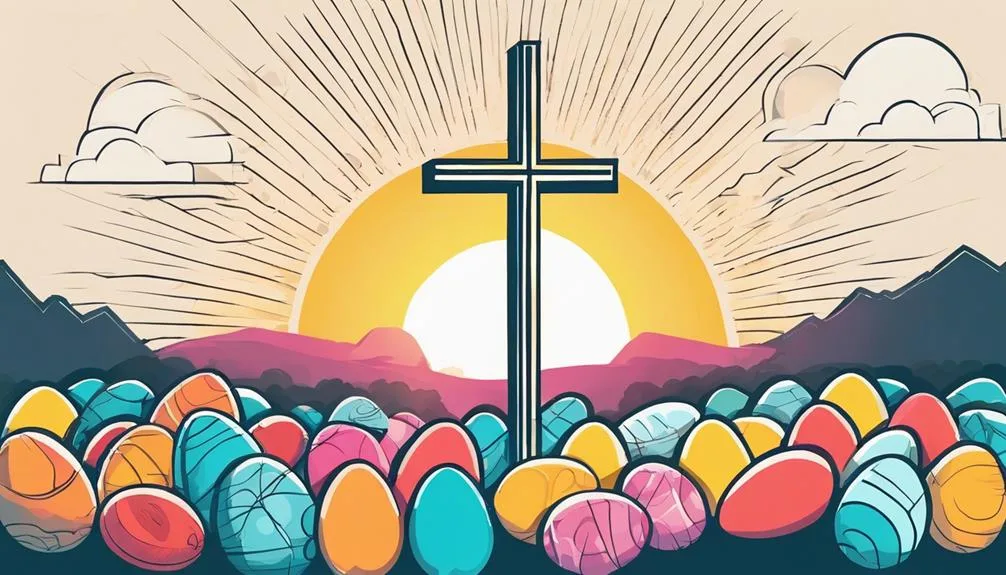
Easter holds profound significance as a time of reflection on the Christian belief in the resurrection of Jesus Christ. It’s a time when families come together to celebrate and engage in various Easter activities. For kids, Easter isn’t only a time for fun but also an opportunity to learn about the religious importance of the holiday. Engaging children in kids’ crafts centered around Easter can be a great way to teach them about the significance of this day.
Encouraging children to participate in Easter activities like decorating eggs, making Easter baskets, or creating Easter-themed artwork can help them understand the religious aspects of the holiday in a fun and interactive way. These activities can serve as teaching moments, allowing kids to express their creativity while also learning about the story of Jesus’ resurrection.
2. Jesus’ Crucifixion
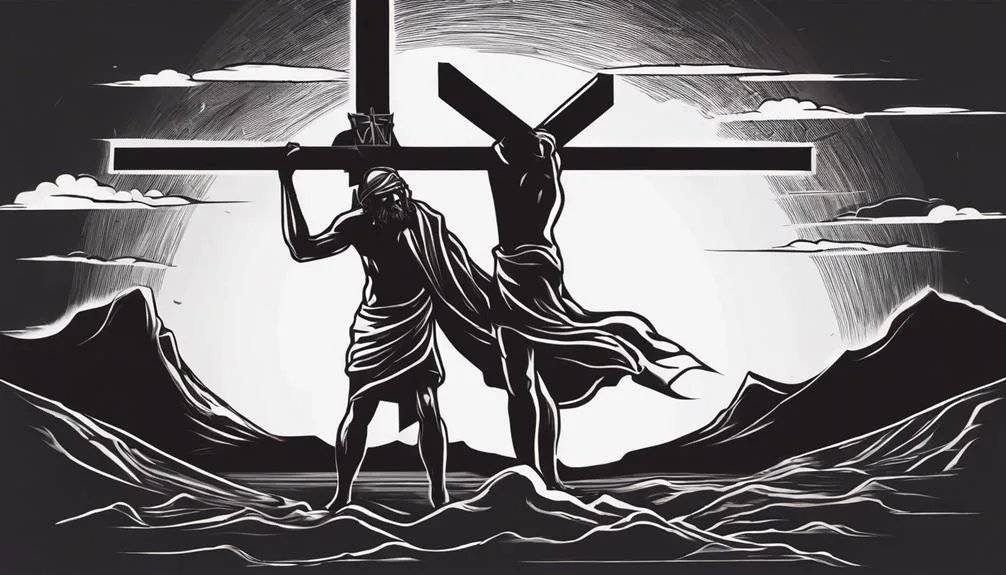
When considering the events leading up to Easter, reflecting on Jesus’ Crucifixion is a pivotal moment in Christian teachings. This solemn occasion underscores Jesus’ sacrifice, redemption, and grace for humanity. Here’s a breakdown of these vital elements:
- Jesus’ Sacrifice: At the Crucifixion, Jesus willingly gave up His life on the cross as an ultimate act of love. His sacrifice is believed to atone for the sins of all people, showcasing unparalleled selflessness and devotion.
- Redemption: Through His Crucifixion, Christians believe that Jesus provided a path to redemption, offering the opportunity for forgiveness and spiritual renewal. This act symbolizes the cleansing of sins and the promise of eternal life for those who believe in Him.
- Grace: Jesus’ Crucifixion exemplifies God’s grace and mercy towards humanity. Despite our imperfections, His sacrifice demonstrates divine love and compassion, emphasizing the boundless nature of God’s grace towards all who seek it.
3. The Resurrection Story

With joy and awe, behold the miraculous account of Jesus’ resurrection from the dead. The Resurrection story is at the heart of the Easter celebration, symbolizing hope, new beginnings, and the victory of light over darkness. On the third day after Jesus’ crucifixion, he rose from the tomb, conquering death and sin. This pivotal event is a cornerstone of the Christian faith, showcasing God’s power and love for humanity.
The Resurrection story teaches children about the importance of faith and the promise of eternal life. It’s a reminder that even in the face of adversity, there’s always the possibility of renewal and transformation. By sharing this story with kids, they can understand that Easter isn’t just about bunnies and eggs but about the profound sacrifice and ultimate triumph of Jesus.
Through the Resurrection story, children can learn about the significance of Jesus’ resurrection in the Christian faith. It’s a tale of redemption and salvation, illustrating God’s mercy and grace towards all. This Easter, as you celebrate with your little ones, remember the Resurrection story and the profound message of hope and rebirth it carries.
4. Importance of Forgiveness
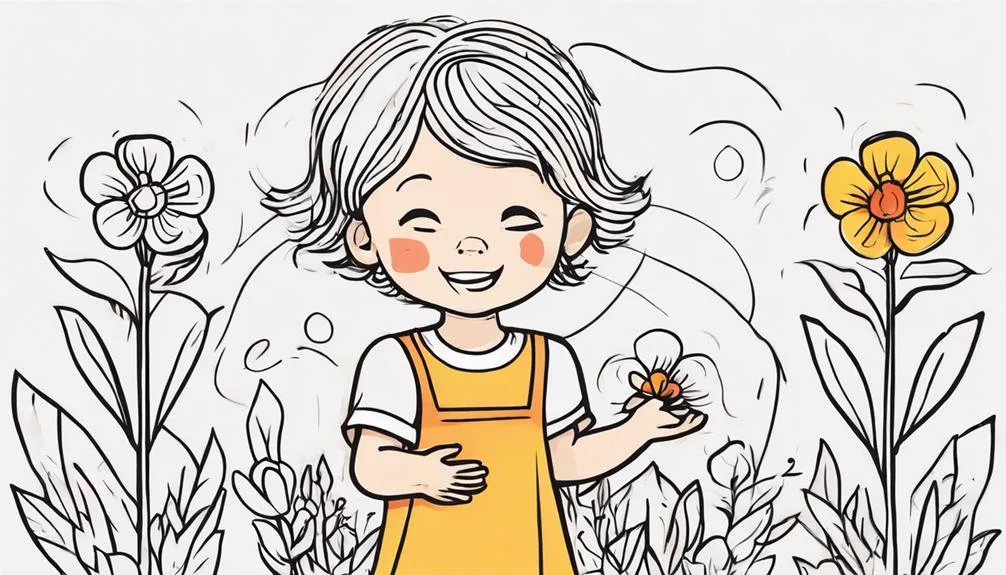
As we reflect on the Resurrection story, consider the profound impact of forgiveness in shaping our lives and relationships. Forgiveness lessons are a fundamental aspect of the Easter message, teaching us the importance of letting go of anger and resentment towards others. By embracing forgiveness, we not only free ourselves from the burden of carrying grudges but also open the door to reconciliation and healing in our relationships.
Here are some ways to incorporate forgiveness lessons and Easter activities with kids:
- Storytelling: Share biblical stories of forgiveness, such as Jesus forgiving those who crucified him, to illustrate the power of letting go and showing mercy.
- Crafts: Engage children in crafting activities where they can create forgiveness cards for family members or friends, expressing their willingness to forgive and seek forgiveness.
- Egg Hunt with a Twist: Organize an Easter egg hunt but instead of candy inside the eggs, place forgiveness prompts or kind messages, encouraging children to forgive and ask for forgiveness as they find the eggs.
5. Symbolism of the Cross

Exploring the profound symbolism of the Cross can deepen children’s understanding of the Easter story and its significance in the Christian faith. The Cross is a symbolic representation of Jesus Christ’s sacrifice and love for humanity. It serves as a powerful reminder of the religious significance of Easter, marking the crucifixion and resurrection of Jesus.
Teaching kids about the symbolism of the Cross helps them grasp the core beliefs of Christianity. The vertical beam symbolizes the connection between God and humanity, highlighting Jesus as the bridge between the two. On the other hand, the horizontal beam represents the relationship among people, emphasizing the importance of love, forgiveness, and unity.
Understanding the religious significance of the Cross encourages children to reflect on the values of compassion, selflessness, and redemption. It teaches them about the ultimate act of love and sacrifice, instilling a sense of gratitude and humility. By delving into the symbolism of the Cross, kids can appreciate the profound message of Easter and its impact on their faith journey.
6. The Last Supper
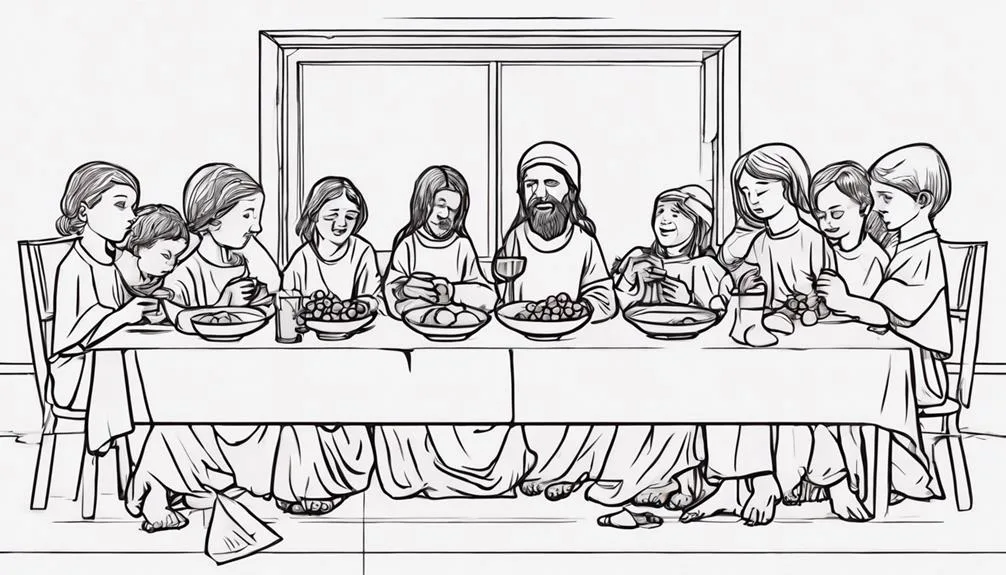
Let’s now look at the significance of ‘The Last Supper’ in the Easter story. The Last Supper was a pivotal event where Jesus shared a final meal with his disciples before his crucifixion. Here’s why this event is important:
- Seder Meal: The Last Supper was actually a Passover meal, known as the Seder. During this meal, Jesus established the tradition of communion by breaking bread and sharing wine, symbolizing his body and blood. This act symbolizes the sacrifice he was about to make for humanity’s sins.
- Passover Connection: The timing of the Last Supper during Passover is significant as it links Jesus’ sacrifice to the Jewish tradition of the Passover lamb. In the Old Testament, the blood of the lamb saved the Israelites from death, foreshadowing Jesus’ role as the sacrificial lamb who’d save believers from spiritual death.
- Eternal Reminder: The Last Supper serves as a reminder for Christians of Jesus’ sacrificial love and the importance of communion in their faith, emphasizing unity, remembrance, and gratitude for his ultimate sacrifice on the cross.
7. The Empty Tomb
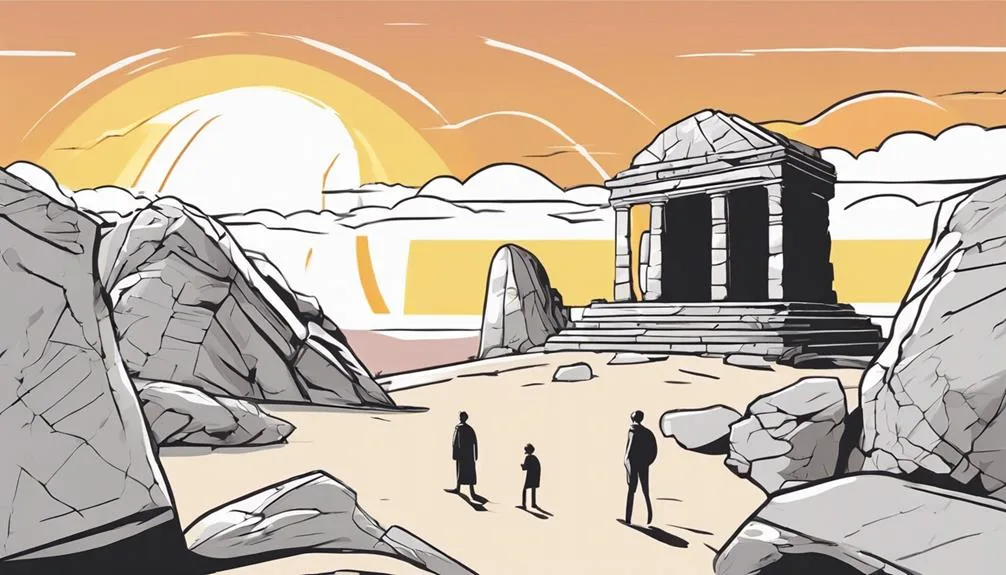
Reveal the secret of the Empty Tomb and explore the deep importance it holds in the Easter story. The empty tomb is a central part of the Easter narrative, symbolizing the resurrection of Jesus Christ and the victory over death. It serves as a powerful reminder of the miraculous event that took place on the third day after Jesus’ crucifixion.
| Faith Lessons from the Empty Tomb |
|---|
| 1. Trust in God’s Promises |
| 2. Hope in the Face of Darkness |
| 3. Victory Over Death |
The empty tomb teaches valuable faith lessons to children. To begin with, it shows the importance of trusting in God’s promises. Despite the sorrow and despair following Jesus’ death, the empty tomb revealed that God had fulfilled His promise of resurrection. Next, it teaches children to hold onto hope even in the darkest of times. Just as the disciples experienced despair before discovering the empty tomb, children can learn that God’s light shines even in the midst of darkness. Lastly, the empty tomb signifies victory over death, showing that through Jesus, believers have eternal life. These faith lessons help children understand the significance of the empty tomb in the Easter story.
8. Jesus’ Love for Children
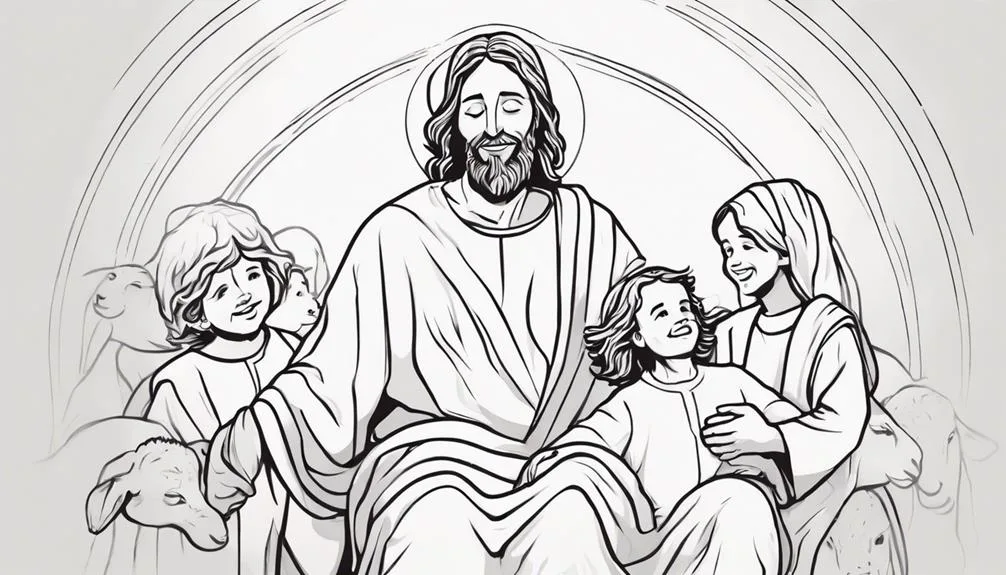
Jesus’ love for children is a profound aspect of his teachings that resonates deeply with young hearts. In his interactions with children, Jesus showed immense care and tenderness, emphasizing the importance of childlike faith and innocence. Here are some key points to understand Jesus’ love for children:
- Welcoming Attitude: Jesus welcomed children with open arms, showing that they were valued and loved in the Kingdom of God.
- Teachings on Humility: Through his teachings, Jesus highlighted the significance of childlike faith, humility, and trust in God, encouraging children to approach Him with pure hearts.
- Blessing the Children: Jesus blessed the children and emphasized the need for adults to learn from the innocence and sincerity of children in their faith journey.
9. Celebrating New Life
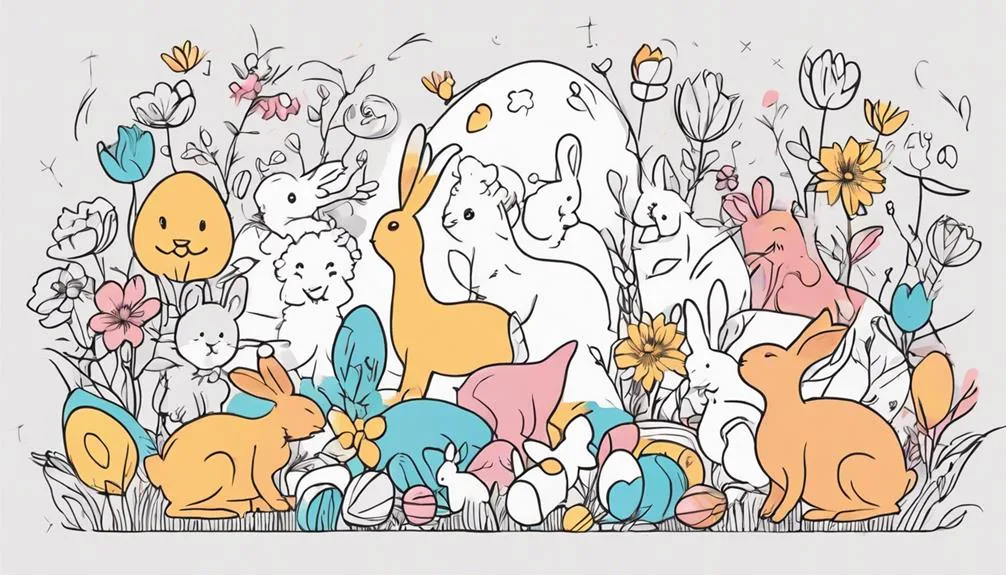
Celebrating new life brings a sense of joy and renewal to our hearts as we reflect on the beauty of God’s creation. Spring activities like egg hunts and crafts provide a wonderful opportunity to celebrate this season of growth and new beginnings with your family.
To make the most of this special time, consider organizing an egg hunt in your backyard or local park. Children love the thrill of searching for hidden treasures while parents enjoy watching their excitement. You can also engage in fun Easter crafts like decorating eggs or making colorful spring-themed decorations to brighten up your home.
Incorporating these activities into your family time not only creates lasting memories but also reinforces the significance of new life during the Easter season. Take advantage of the warmer weather and longer days to bond with your loved ones outdoors while celebrating the blessings of renewal and growth.
Conclusion
Having delved into Easter’s core significance and its life-enriching lessons, it’s time to embrace the depth of Jesus’ sacrifice and His boundless love for us all.
Let’s hold dear the principles of forgiveness, the profound meaning behind the cross, and the celebration of renewal and life. May this Easter inspire a sense of deep gratitude, urging us to spread love and compassion.
Wishing everyone a heartfelt Easter, filled with reflection and joy.

